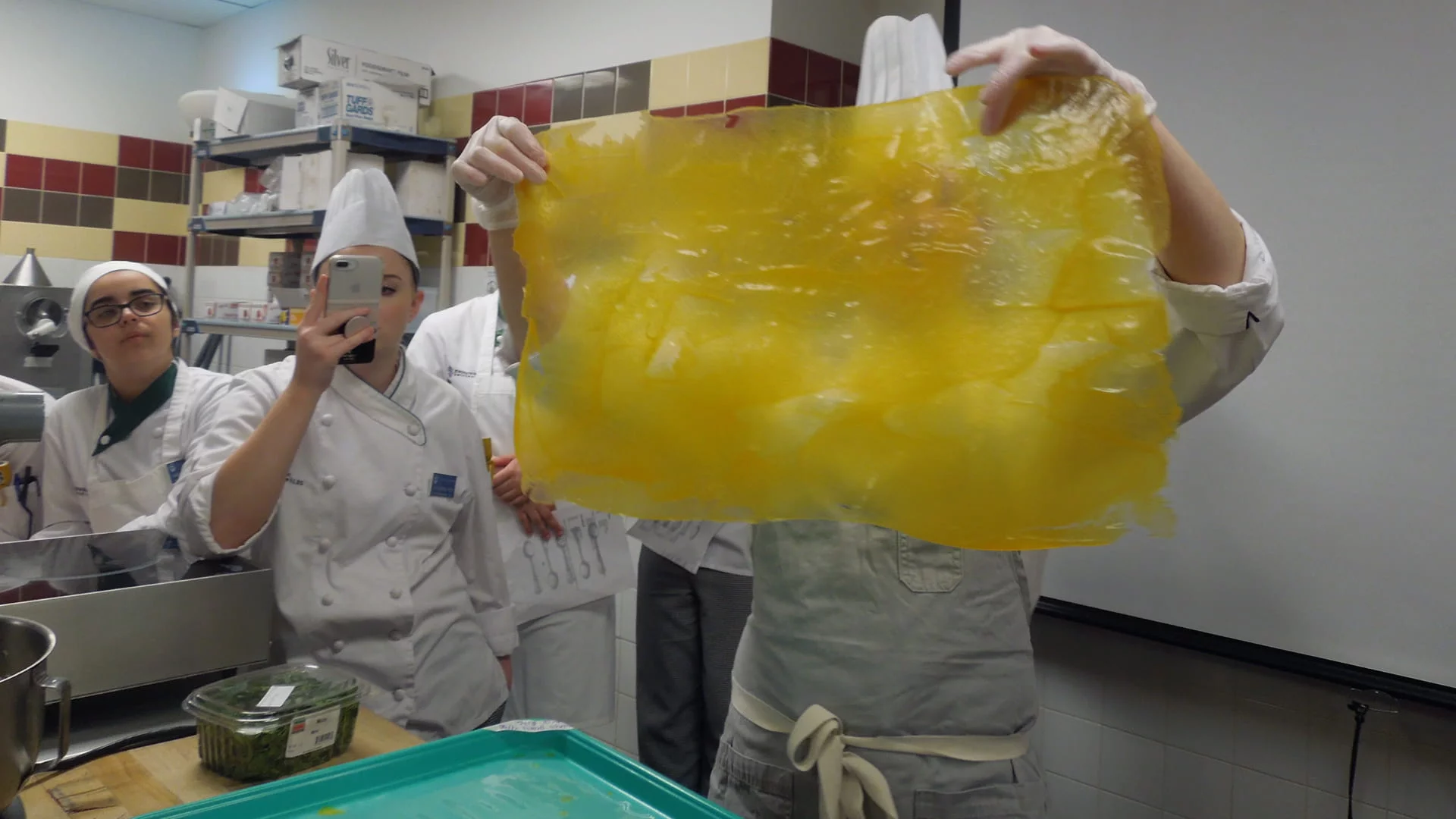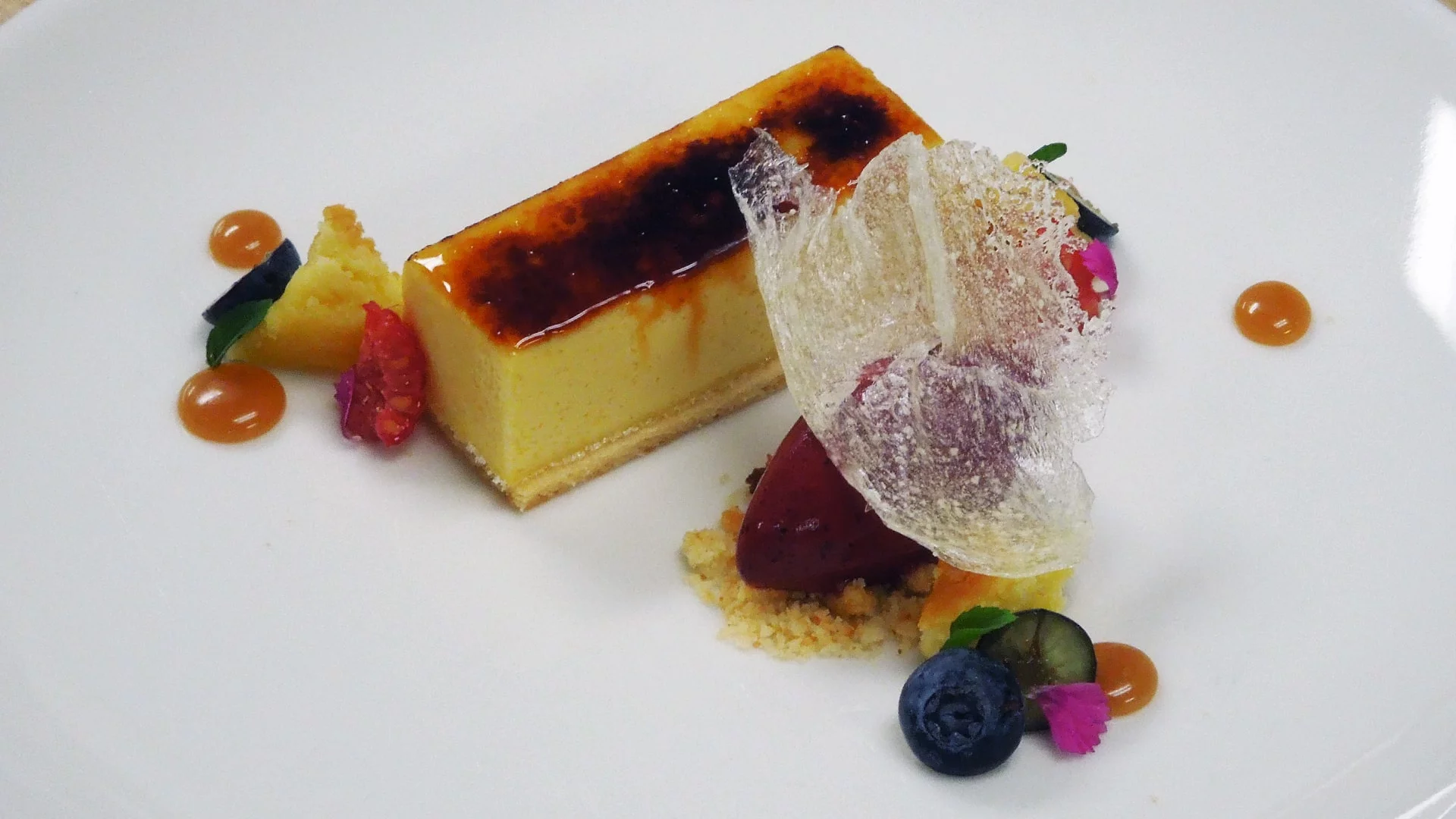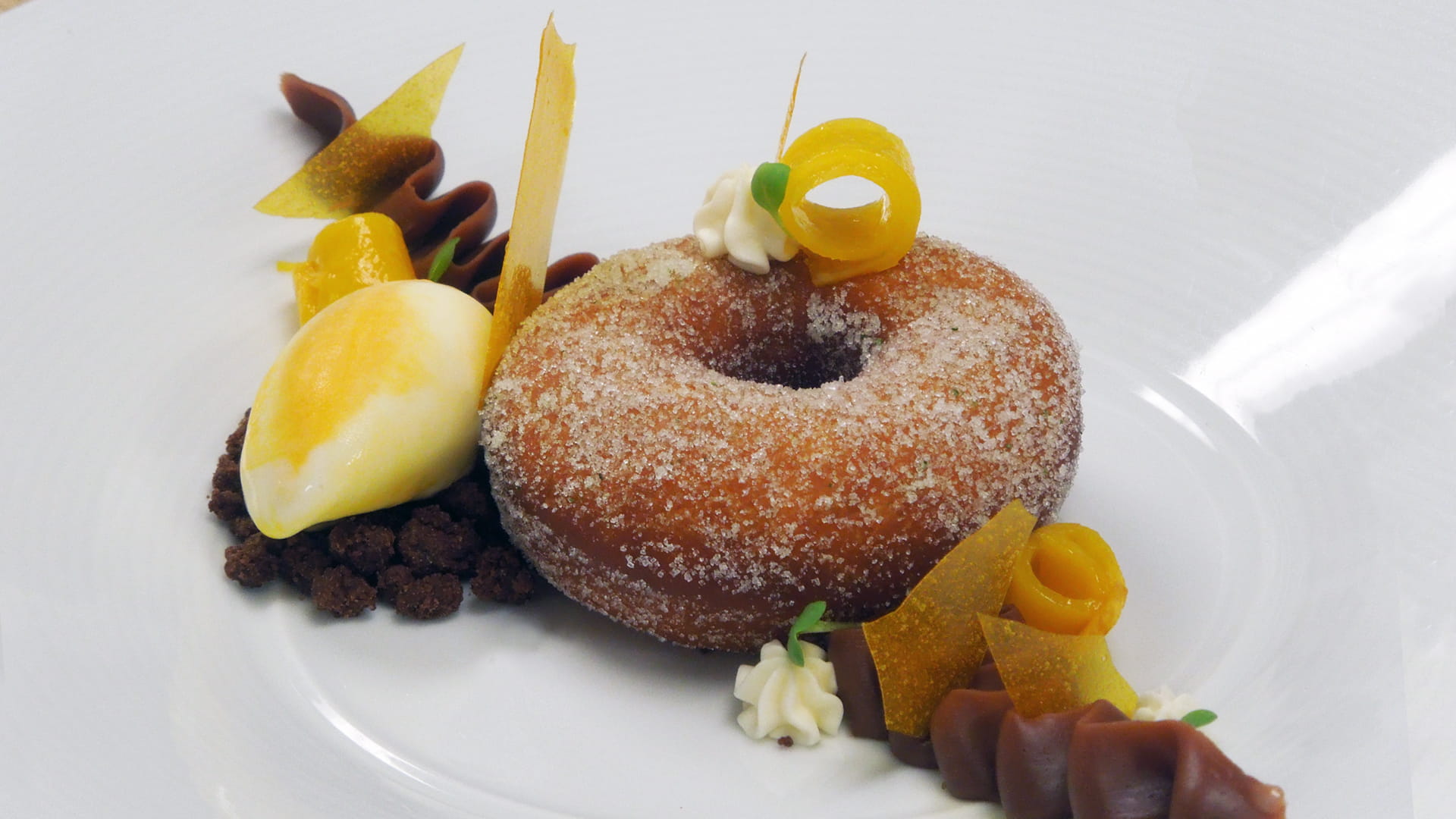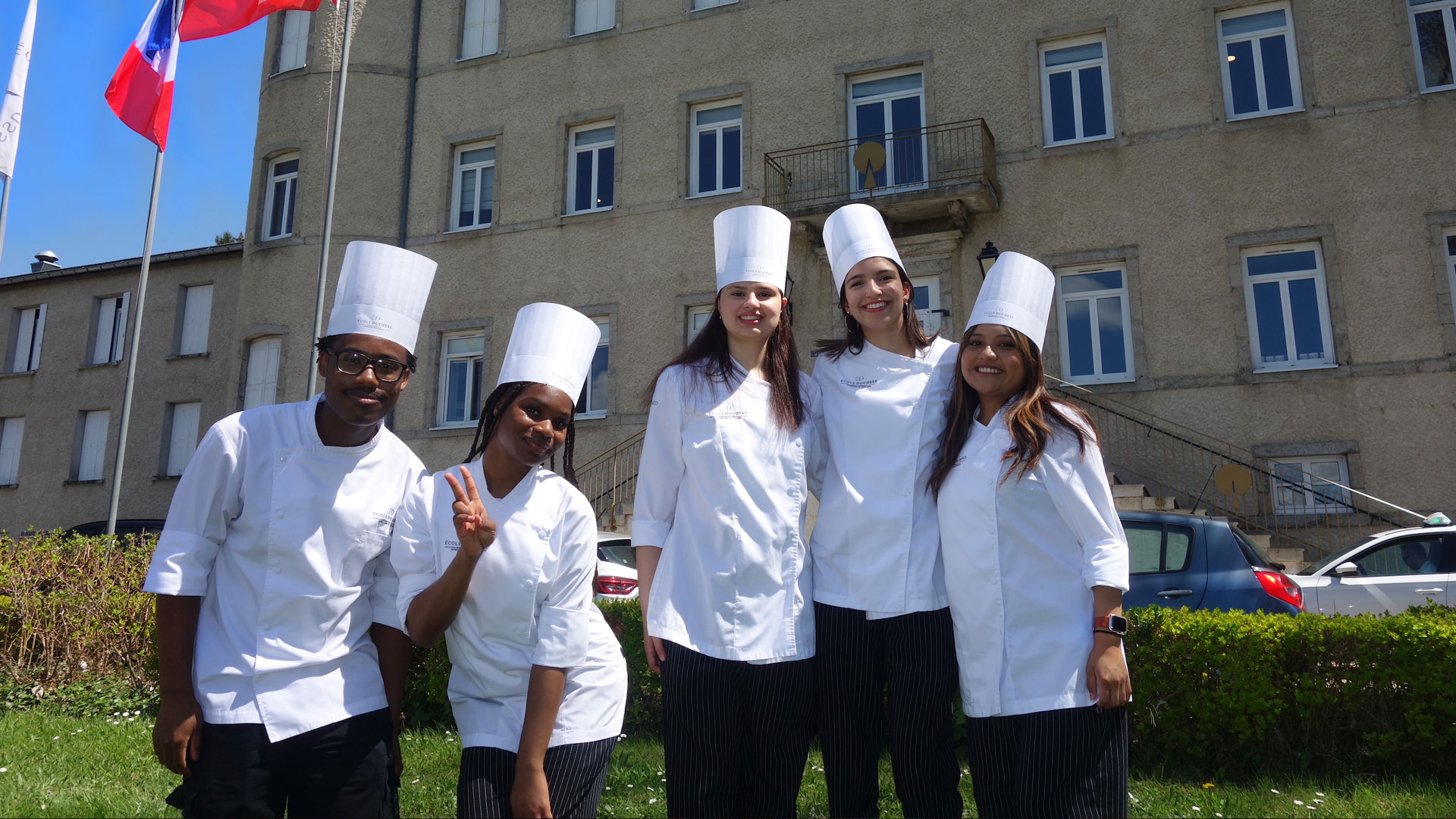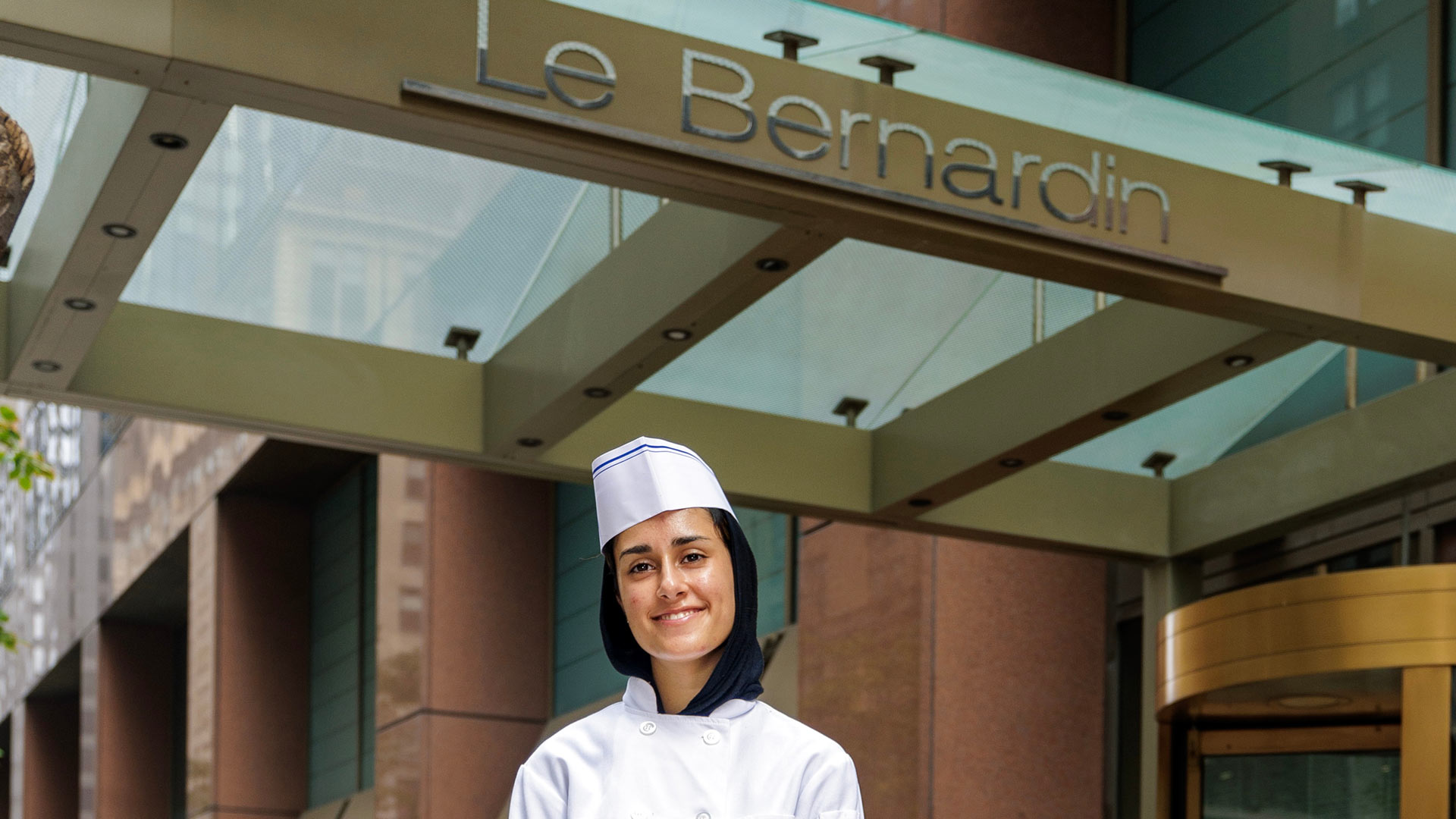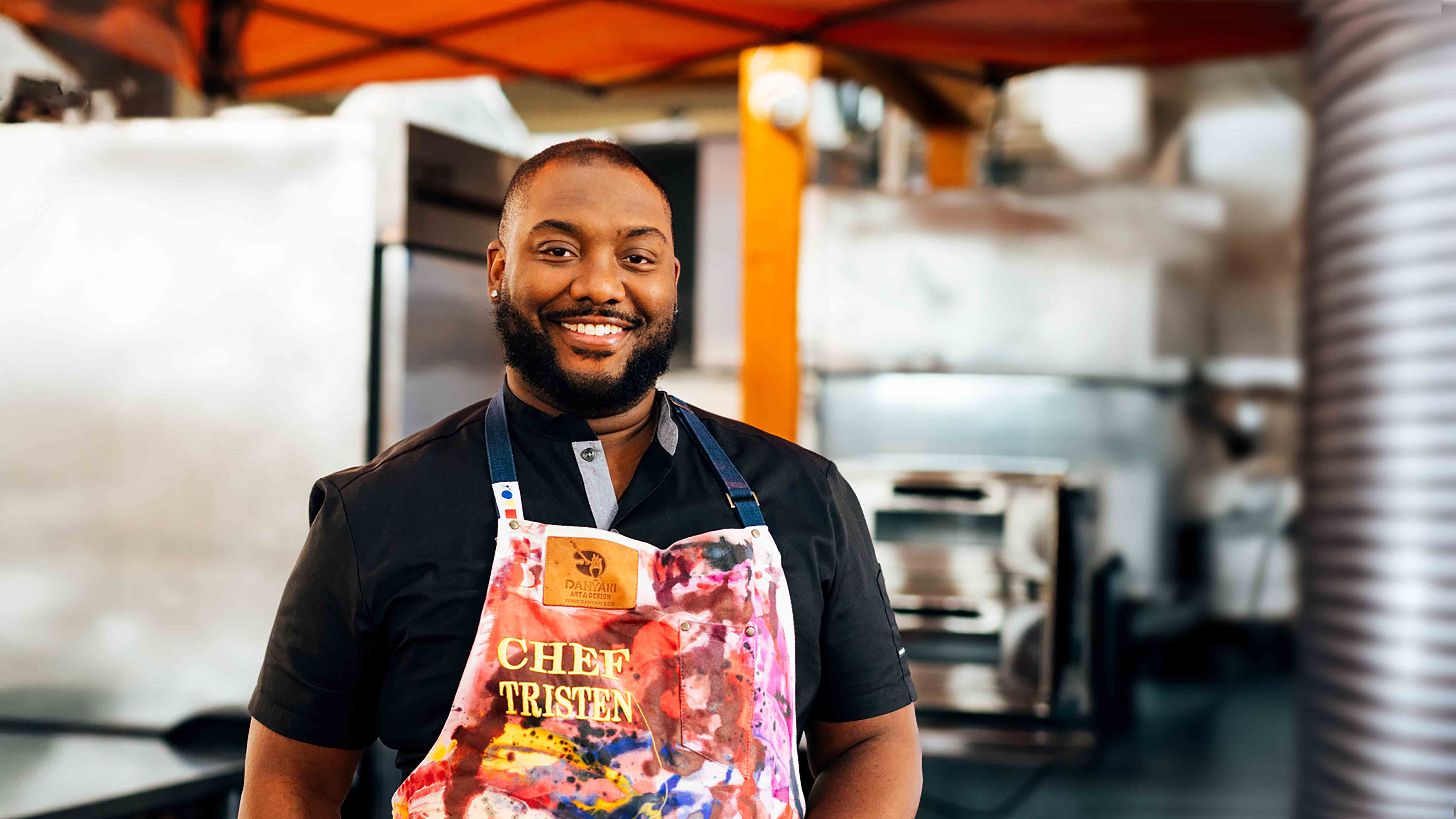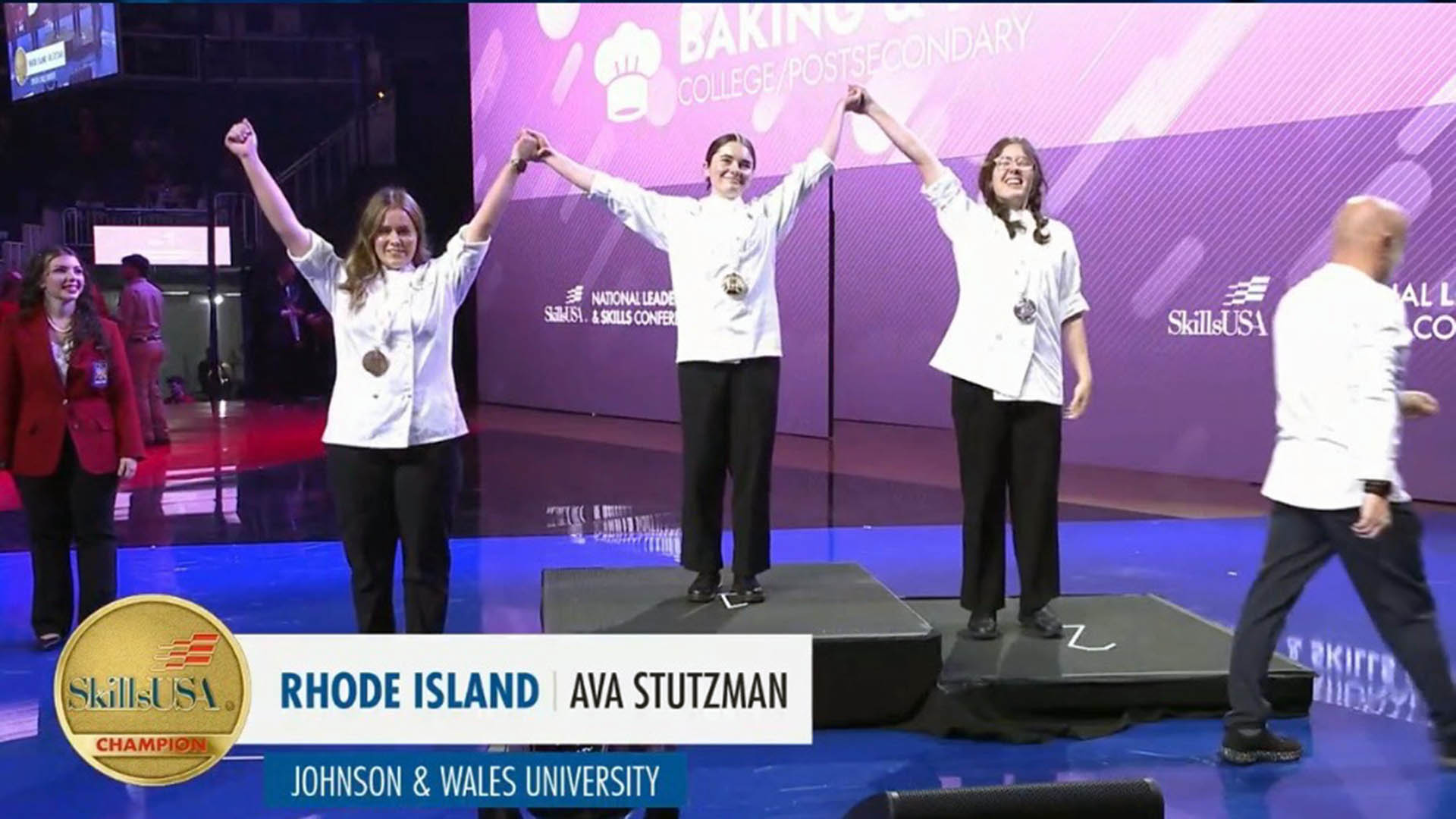Sweet Spot: The Fine Art of Plated Desserts
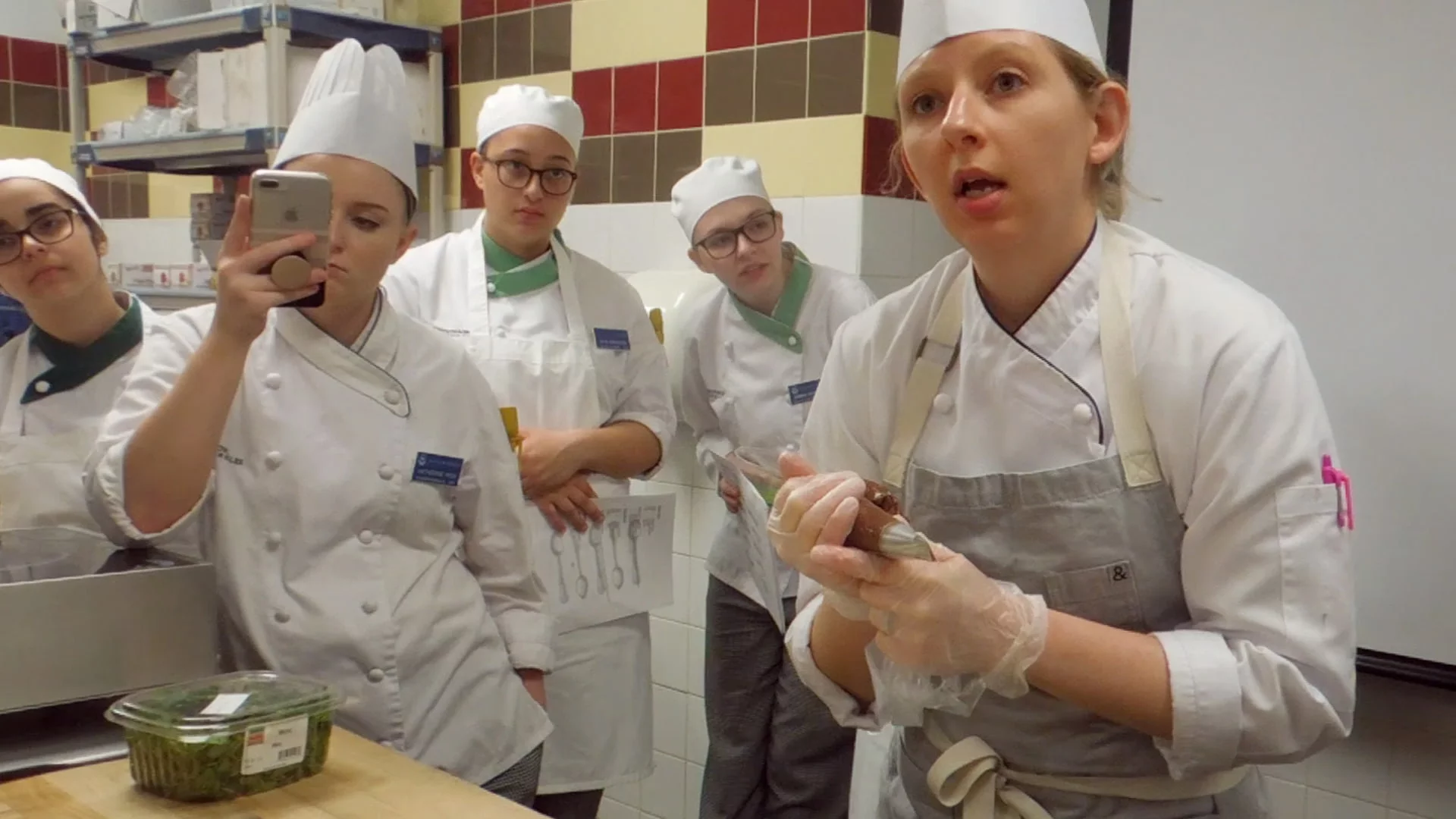
Plating desserts is a fine art, and one that Chef Jaime Schick '07 clearly loves to teach. Throughout her recent demo for JWU Providence’s Pastry Arts Club, she emphasized the need to create complementary elements on the plate. Too precise? Add a rough-hewn or organic element. Too monochromatic? Add pops of color. Too salty? Add sweet. Too weighty or rich? Add light, acidic or herbaceous elements to cut the fat. Balance is the ultimate goal.
Schick is a 10-plus-year veteran of various fine dining settings. “I love plated desserts,” she effuses to the assembled group of JWU students, many of whom are baking & pastry majors. “I really found my groove with using savory ingredients — a black olive clafoutis was my introduction to the savory-sweet world. I love savory because it’s a grounding element — it’s unexpected.”
Her demo showcased two desserts with unexpected elements:
- miso crème brûlée with white chocolate cake and a mixed berry sorbet
- jalapeño doughnuts with milk chocolate cremeux, coconut ice cream, mango sorbet and mango ribbons
The overall goal when plating is to please the customer’s eye and palate, which means that every decision about flavors, colors and textures should support that goal. To this end, Schick offers up some rules:
1) Balance unorthodox flavors with accessible ones.
“Whenever I use a savory ingredient, I like to pair it with a familiar flavor — that way, people are more willing to take a chance on it. One of my favorites is miso with apple cider, which is very Fall. For this miso crème brûlée, I’m going with a mixed berry sorbet, because it’s Spring.”
2) Odd numbers are best.
“Think of creating lines that your eye can follow. Odd numbers are the rules I live by!”
"Whenever I use a savory ingredient, I pair it with a familiar flavor."
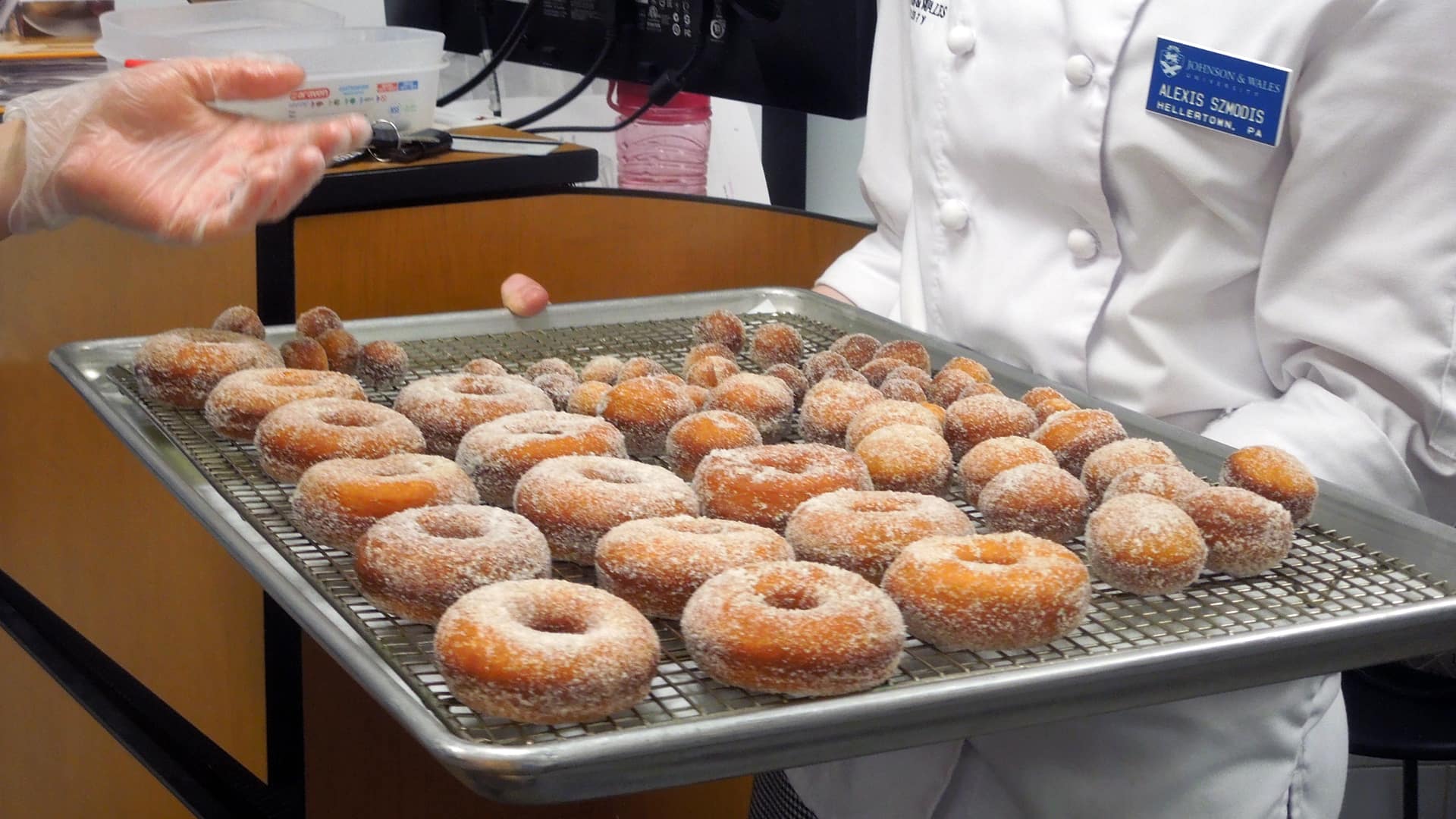
The big idea here? When your foundation elements are geometric — for example, the sharply rectangular crème brûlée or the perfectly round doughnuts — it frees you to play with asymmetry in the actual plating.
While Schick centers the jalapeño doughnut on the plate, she adds “wild card” elements to create interesting negative space on the plate: waves of milk chocolate cremeux; seemingly random dots of whipped coconut panna cotta; shards of mango “glass” (mango puree blended with glucose and isomalt, then dehydrated into a sheet) and tart ribbons of fresh mango. The mango sorbet and coconut ice cream get blended into a single perfect quenelle. (“There are 1,000 ways to quenelle – the only wrong way is with two spoons,” she notes.)
3) Fresh fruit is colorful and cuts through the fat.
“I love finding ways to add fresh fruit to desserts, especially a creamy dessert, because it really lightens it up. Custards have a lot of fat in them, so you want to think about how to cut down on the richness and fattiness.”
Schick’s fruit elements are deployed with precision, and always with an eye towards scale and the customer experience: “I always cut blueberries and raspberries in half — not only does it reduce bulk on the plate and make a more interesting shape, but it’s a more pleasant bite.”
Fruit also adds much-needed pops of color to brighten up a monochromatic dessert — and each pop of color translates to a burst of concentrated fruit flavor. (Schick also likes herbacious/floral garnishes, like microgreens or edible flowers, for the same reason.) Talk about win-win!
4) Got scraps? Use (and re-use) ‘em!
Schick’s miso dessert features a shortbread base made of miso, vanilla, butter, cake flour and almond flour. It’s a recipe that can be scaled up or down easily, but any leftovers can be pulsed in a food processor to make miso sand for deployment as a textural element. She’s all about finding a use for everything — it just takes a little creativity.
"I love finding ways to add fresh fruit to desserts, because it really lightens it up."
Her trick for getting a perfectly rectangular base for her brûlée? She par-bakes the dough for 3-4 minutes (just enough to set), makes her cuts, then lets the dough finish baking. “That way I get the exact shape I want with really crisp edges – it didn’t grow on me or get misshapen in the oven. All the extras get crumbled up.”
As the demo winds down, a student asks if Schick ever changes up plates mid-menu. “If I was having doughnuts on the menu, the plate would look like this every time,” she explains, gesturing toward her finished plate. “However, if at some point I decided I hated the look of it — which happens, I’m human — I would change it up and then it would stay that way through the rest of its run. If your guests are coming for that specific dessert, you want to offer a consistent experience.”
